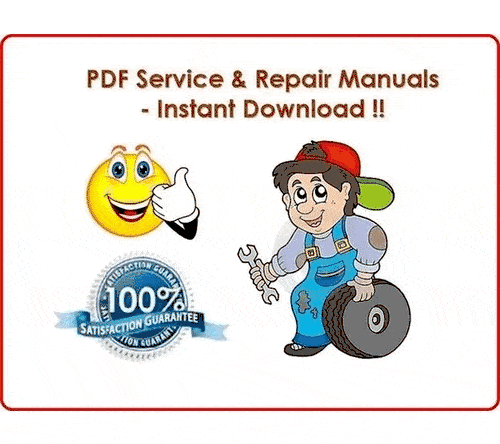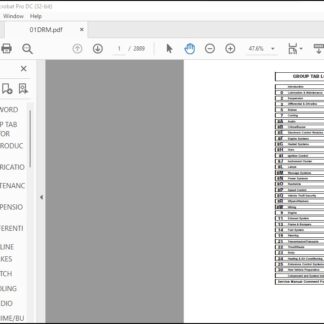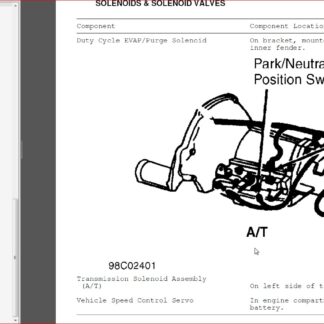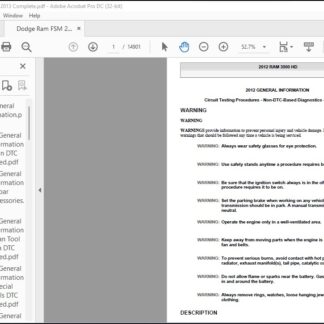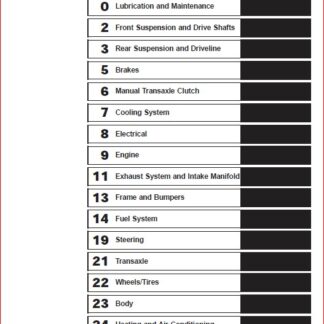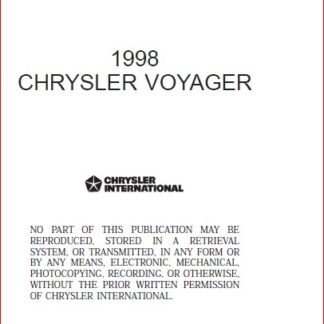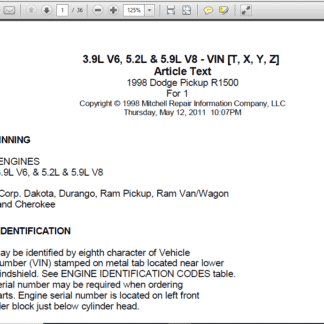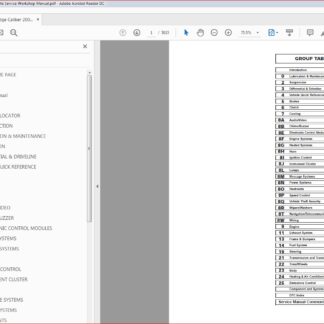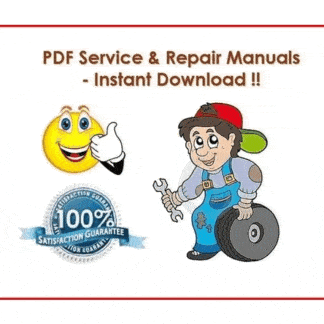Description
1999 Dodge Ram Pickup Truck R1500 Complete Official Factory Service Repair Full Workshop Manual PDF Download
E-Books format: PDF
Language: English
Content: 1691 pages
SAMPLE PAGE:
HANDLING/SAFETY PRECAUTIONS
1) Always work in a well-ventilated, clean area. Refrigerant
is colorless and invisible as a gas. Refrigerant is heavier than
oxygen and will displace oxygen in a confined area. Avoid breathing
refrigerant vapors. Exposure may irritate eyes, nose and throat.
2) Always wear eye protection when working around A/C system
and refrigerant. The system’s high pressure can cause severe injury to
eyes and skin if a hose were to burst. If necessary, wear rubber
gloves or other protective clothing.
3) Refrigerant evaporates quickly when exposed to atmosphere,
freezing anything it contacts. If liquid refrigerant contacts eyes or
skin (frostbite), DO NOT rub eyes or skin. Immediately flush affected
area with cool water for 15 minutes and consult a doctor or hospital.
4) Never use R-134a in combination with compressed air for
leak testing. Pressurized R-134a in the presence of oxygen (air
concentrations greater than 60 percent by volume) may form a
combustible mixture. DO NOT introduce compressed air into R-134a
containers (full or empty), A/C system components, or service
equipment.
5) DO NOT expose A/C system components to high temperatures
(steam cleaning for example), as excessive heat will cause refrigerant
system pressure to increase. Never expose refrigerant directly to open
flame. If refrigerant needs to be warmed, place bottom of refrigerant
tank in warm water. Water temperature MUST NOT exceed 125 ? F (52 ? C).
CAUTION: When R-134a is exposed to an open flame, drawn into engine,
or detected with a Halide (propane) leak tester, a poisonous
gas is formed. Keep work areas well ventilated.
6) Use care when handling refrigerant containers. DO NOT
drop, strike, puncture, or incinerate containers. Use DOT 4BW or DOT
4BA approved refrigerant containers.
7) Never overfill refrigerant containers. The safe filling
level of a refrigerant container MUST NOT exceed 60\% of the
container’s gross weight rating. Store refrigerant containers at
temperatures less than 125 ? F (52 ? C).
8) R-134a refrigerant is sold and stored in 30- or 50-pound
Light Blue containers, while Freon (R-12) is stored in White colored
containers.
9) Refrigerant R-12 and R-134a must never be mixed, as they
and their desiccants and lubricants are not compatible. If the
refrigerants are mixed, system cross-contamination or A/C system
component failure may occur. Always use separate servicing and
refrigerant recovery/recycling equipment.
10) Read and follow equipment manufacturer’s instructions for
all service equipment to be used. The Material Safety Data Sheet
(MSDS), provided by refrigerant manufacturer/supplier, contains
valuable information regarding the safe handling of refrigerants.
IDENTIFYING R-134a SYSTEMS & COMPONENTS
To prevent refrigerant cross-contamination, use following
methods to identify R-134a based systems and components.
PLEASE NOTE:
- This is the same manual used by the dealers to diagnose and troubleshoot your vehicle
- You will be directed to the download page as soon as the purchase is completed. The whole payment and downloading process will take anywhere between 2-5 minutes
This factory Mopar Dodge Service Manual Download will give you complete step-by-step information on repair, servicing, and preventative maintenance for your Dodge. This Dodge FSM (Factory Service Manual) is highly detailed with photos and illustrations to help guide you through every repair and troubleshooting procedure. This is the Dodge OEM (Original Equipment Manufacturer) manual from Mopar so it contains all you need to know to keep your Dodge working right and is the only service repair manual you will need. All pages are printable, so print what you need and take it with you into the garage or workshop. Save money by doing your own repairs!
